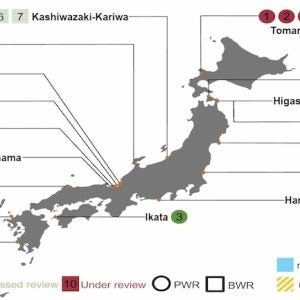Advanced information management
The broad ownership base of the Alholmens plant and the use of demanding technology played a key role in Alholmens Kraft’s decision to invest in a highly comprehensive information management system with which plant operation and performance could be followed closely. Accurate monitoring and reporting of the plant’s various products (electricity, process steam and district heating) are of utmost importance to ensure proper invoicing. Due to the boiler’s large size and wide range of fuels, accurate monitoring, for example, of fuel consumption and efficiency would be next to impossible without advanced calculation applications.
Automation and information management is being provided by Metso Automation’s dynamic network of applications, metsoDNA, which is based on the free networking of knowledge and information, control automation and embedded field control.
The metsoDNA system covers the whole automation process from fuel processing to the distribution of district heating. Thirteen redundant process stations manage the plant’s measuring and control activities, comprising about 10000 I/O circuits. The interfacing stations also link the boiler’s safety system, the steam turbine controls and safety system and the electricity distribution system to the applications network. Three operator workstations are used to control and monitor the process. The plant’s shift supervisor has his own workstation.
The primary information management tools are a process history database, an alarm database, user tools and calculation applications. The history database collects and stores measured and calculated parameters. Measurements are taken at some 2000 points. This information is stored in compressed form at acquisition frequency, enabling the analysis of disturbances a long time after they occur.
Calculation applications provide valuable information for the plant management as well as for operating and maintenance personnel. These applications calculate, for example, key economic indicators, such as the efficiency of electricity production and performance of main plant components, such as the operating efficiency of the boiler and the turbine.
User tools are used to process stored information into desired formats, including creation of various charts, trends and reports for more in-depth process monitoring and analysis. A separate “replay” tool is provided for troubleshooting, that reruns previous events as in a video recorder. The alarm historian tool provides statistics and extracts from saved alarms on the basis of different criteria, for example a “top ten” alarm list for a specified process.
An important information and knowledge management tool is a web browser based diary application that transmits important organisational experience on process and operating events between shifts. Operators also have at their disposal dynamic operation descriptions for individual loops into which they can also record their own experiences.
The information management systems are available to eight users at the plant, although remote access is also possible through PVO’s internal network. Measured and calculated information is also transmitted to several other systems, such as PVO’s energy management system, and UPM-Kymmene’s energy management system and maintenance information system. Fuel data are received from UPM-Kymmene’s Metsä (forest) system.
As information management is so crucial to the plant, tough requirements have been placed on performance and availability. The plant’s Windows NT server has been enhanced by a redundant Xeon processor, power sources, fans, network interfaces and RAID-protected disks. More than 100 gigabytes of disk space are available.
The information management systems includes basic standard calculation applications as well as applications specifically customised to Alholmens Kraft’s needs. Calculation packages include: precalculation and validity check of measurements; performance management (for the CFB and steam turbine); condition monitoring; deviations from the operating optimum; operational economy; emission monitoring; auxiliary equipment; life-cycle calculation; and calculation of the lost electrical power in back-pressure operation.
Displays range from those covering the entire plant to component-specific (eg CFB and steam turbine) displays.
The key measurements used for invoicing and accounting can be compared with figures generated by the applications to ensure their accuracy. The run times of the fluidised bed boiler, steam turbine, coal burning and other equipment are also reported to assist in the basic monitoring of the plant.
For reporting production accurately, the mass and energy balance of the CFB and steam turbine are calculated. Because the boiler uses solid fuels and the momentary fuel flows cannot be measured accurately, the momentary fuel power is solved by iterating from the boiler’s mass and energy balance. The many diverse components of the fuel fed into the boiler make the accurate solving of these values a challenging task.
The emissions calculation application continuously monitors the plant’s emissions. The plant faces strict emission limits and it is particularly important to monitor emissions continuously and accurately. In determining characteristic emissions (mg/MJ), fuel power must be known accurately.
The information management applications also monitor values relevant to the condition of the boiler and the steam turbine. Terminal temperature difference and recuperation degrees are computed from the water-steam circuit, which makes it possible to determine if the heat exchanger is leaking or if it needs cleaning.
The boiler’s functioning in different process states can be monitored with the help of changes in ventilation and heat levels. Changes in the temperatures of the fluidised bed and steam in the steam-cooled cyclone provide valuable additional information about the functioning of the boiler and its condition.
The plant condition application also calculates the boiler’s life expectancy. It classifies the temperatures and pressures of the boiler’s live steam and hot intermediate superheated steam. It stores the operating times of boiler’s different components in each temperature and pressure class into the database. It estimates the loads inflicted on the boiler, for example, by startups. The information provided by the application is used to determine the timing of maintenance operations.
As it is not possible to continuously run the plant at the design point, the effect of changes in process values on the plant’s fuel consumption and efficiency must be accounted for when evaluating the plants operation and performance. The run deviation calculations assist in the determination of the effect of changes on the plant’s operations and actual use. The figures produced by the calculation function can be used as a tool for the operator in the short-term and as guidance when planning run strategies over the long-term.
For example, a momentary increase in the temperature of flue gas in excess of guidelines reduces the boiler’s efficiency. Run deviation calculations take this into account and compute the resulting increase in fuel consumption. In this way, changes in fuel consumption can be monitored both in the short-term and in the long-term.
The sale and invoicing of process steam and district heating set specific demands on the accuracy of information that information management systems produce. In addition to reporting total fuel costs, these costs must be allocated to the different processes as accurately as possible. Alholmens Kraft has a customised calculation application for invoicing. It is based on the principle that whenever process steam or district heating is produced, some steam turbine electricity output will be lost. That is, it would have been possible to get more electricity output from the steam used in process steam and district heating if electricity production could have been maximised. This loss in efficiency is the “price” of process steam and district heating. The loss in production is therefore accurately determined – not only on the basis of steam amount used in process steam and district heating but also on the basis of steam power.
A courageous step
The owners of Alholmens Kraft have taken a courageous and far-reaching step in investing in the world’s largest bio-fired power station. But they are dependent on long-term national policies regarding energy. At the same time they are helping to fulfil the targets set by the EU to increase the consumption of bio fuels and reduce the levels of carbon dioxide emissions.
Electricity generated by the power station will be competing on the open Nordic market. The more competitive the electricity prices of Alholmens Kraft, the more the power station will be able to exploit the local bio energy market. Over the next few years, we are confident that many other tree-based bio fuels will be used in tests with a view to increase the amount of bio fuels harnessed in generating power. The competitive position of Alholmens Kraft will undoubtedly be followed with great interest in energy circles all over






